Blog
Corrosion-related characteristics of galvanized steel sheet
Release time:
Nov 02,2023
Information Summary:
Galvanized steel sheet is coated with a layer of metal zinc on the surface of the steel sheet to prevent corrosion and prolong its service life. This galvanized steel sheet is called galvanized sheet. It is generally widely used in construction, home appliances, vehicles and ships, container manufacturing, mechanical and electrical industries, etc.
First, hot-dip galvanized steel sheet
Second, alloyed galvanized steel sheet
Third, electro-galvanized steel sheet
Fourth, single-sided and double-sided galvanized steel sheets
Alloy and composite galvanized steel sheets
So what happens when galvanized steel sheet is exposed to the air? In order to gain a better understanding of the product and gain some new inspiration in storage, let's learn about it together!
When the galvanized steel sheet is exposed to the air, it will only produce dry etching, wet-cold etching, and wet etching.
Dry erosion refers to the erosion of the surface layer of steel in ambient air with an air humidity lower than 30% that does not produce a continuous electrolyte water film. At this time, the erosion rate of steel is relatively slow, but this type of natural environment standard is less.
Wet and cold etching refers to the erosion of steel in ambient air with an air humidity of more than 30% and less than 100%. In this case, there is dust on the surface of the steel, and there are micropores and gaps in the rust layer, which cause microscope absorption, generating shrinkage water that cannot be seen by the human eye. The principle of primary battery is generated under shrinkage water, and the etching rate is relatively fast.
Wet erosion refers to the erosion of galvanized steel sheet when there is solidified shrinkage water on the surface in the humid ambient air with an air humidity exceeding 100%, which is visible to the human eye. In this case, the shrinkage water on the surface of the steel is thicker, which makes the rate of oxygen diffusion to the outside of the steel surface after melting slower, reducing the rate of erosion. In fact, the corrosion of steel is closely related to the shrinkage water on the surface between the two, and it is also due to the melting of CO2 in the water, which causes iron to produce weak electrolytes, resulting in a series of weak electrolyte reactions.
The CO2 in the gas continues to melt in the water, and the reflection continues. Since the key product of the reflection is bright red, the material after the oxidation of iron air is generally called "red rust". Red rust is very loose and easy to melt. It is impossible to maintain the surface of the steel from re-etching, which prompts the erosion of the steel to continue until it is completely etched. It is a characteristic of steel. Because of this, the steel must be coated with other metal materials or the thickness of the protective layer of metal materials to reasonably avoid the corrosion of the steel.
Related News
Classification of galvanized sheet metal
2024-11-25
Contact an expert now for a solution!
Please fill in the form below and we will contact you as soon as possible.
LET'S MAKE YOUR PROJECT A REALITY
Contact Information
Dianzi Industrial Park, Boxing, Binzhou, Shandong,China

